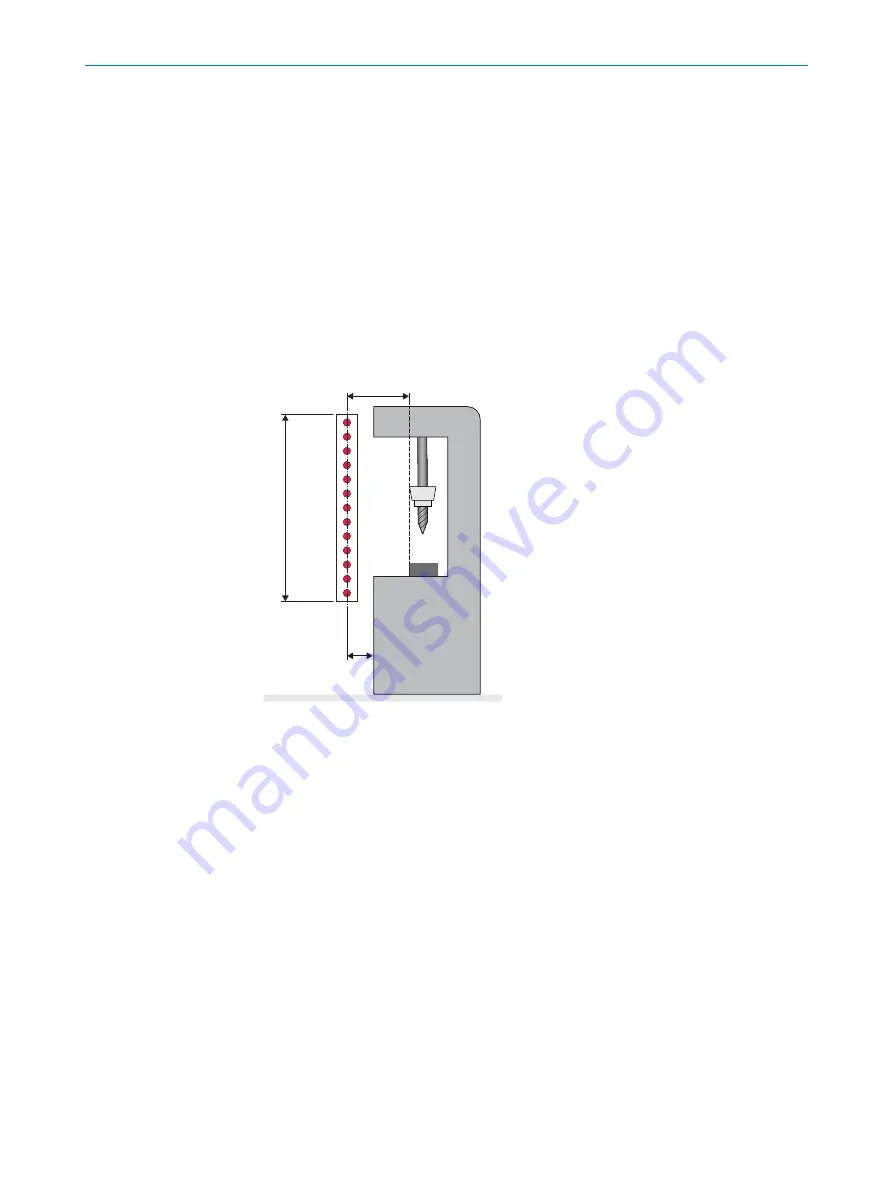
Where:
°
S = minimum distance in millimeters (mm)
°
K = approach speed (stepping and/or gripping speed) of a person or a body
part (mm/s), e.g. 2,000 mm/s
°
T = machine stopping time + response time of the protective device after
interruption in the light path in seconds (s)
°
d = resolution of the safety light curtain in millimeters (mm)
2.
If the result S is ≤ 500 mm, then use the determined value as the minimum
distance.
3.
If the result S is > 500 mm, then recalculate S with an approach speed of 1,600
mm/s as follows:
S = 1,600 mm/s × T +8 × (d – 14 mm)
4.
If the new value S is > 500 mm, then use the newly determined value as the
minimum distance.
5.
If the new value S is ≤ 500 mm, then use 500 mm.
!
"
§
S
Figure 8: Minimum distance to the hazardous point for orthogonal (rectangular) approach to the
protective field
1
Protective field height
2
Hazardous point
3
Depending on the application and distance, persons must be prevented from standing
behind the protective device.
Example calculation
Machine stopping time = 290 ms
Response time after interruption of the light path = 30 ms
Resolution of the safety light curtain = 14 mm
T = 290 ms + 30 ms = 320 ms = 0.32 s
S = 2,000
mm/s × 0.32
s + 8 × (14
mm – 14
mm) = 640 mm
S > 500 mm, therefore:
S = 1,600
mm/s × 0.32
s + 8 × (14
mm – 14
mm) = 512 mm
4
PROJECT PLANNING
18
O P E R A T I N G I N S T R U C T I O N S | deTec2 Core
8014276/1DCM/2022-10-27 | SICK
Subject to change without notice
















































